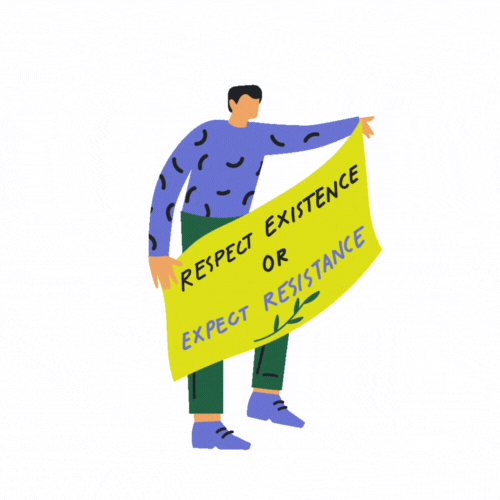Our Approach
We believe every single person in an organization can contribute something unique and life-giving to the group.
In order to amplify this, we suggest and advise people collectives to create a representative core group that is a cross-section of the organization to support the development of shared values based on diversity, equity, and inclusion.
Once this group is formed, it goes through
the process by which they (co)define a focus
for growth of the collective’s values.
They (co)find when they thrive in their work through interviews amongst themselves and then expand this exploration to direct engagement with the greater collective.
They then (co)align on themes they’ve
identified through these interviews and
(co)design how to bring these themes to life.
Finally, partner organizations collaboratively synthesize the work they’ve done into an equity-based plan of action to move forward their new future.
We take a similar approach to our policy development and organizational coaching offerings. Central to any engagement, we encourage our partners to think critically about who is the most impacted by big systemic changes in their collective and pay attention to how they shape policy and norms.
Our approach to coaching and consulting
Appreciative Inquiry
Appreciative Inquiry (AI) is an organizational development process that identifies and grows what makes a human system thrive. In strategic planning, we use this approach to guide organizations in exploring when they are at their best and what changes can be created to live their potential. That doesn’t mean the collective will always be happy with all decisions or that there will not be discomfort in the process of having a more inclusive culture. It means that organizations will be equipped to be with this discomfort to be able to live from shared values.
Community organizing and social + racial justice
Community organizing is based on bringing people affected by an issue to the decision-making table to affect social change in a way that builds collective power. Social justice is the fair distribution of resources across all people, regardless of their positionality within a social group (aka their social identities.) In a just society, each member and group is affirmed, respected, valued, and held accountable. Racial justice is the fair treatment of people of all races, through deliberate systems that support racial equity (equitable outcomes based on race.)
For our partner people collectives, we believe community organizing principles invite new ways of decision-making and culture co-creation.
Taking a less vertical, more consensus-based approach to DEI norm implementation, ensures that each member of an organization is taking ownership of the collective’s values in practice.
Social and racial justice principles are rooted in our practice. They manifest through explicit consideration of how our social identities interact with each other in partner collectives.
We pay attention to how our co-creation may perpetuate systemic oppression, especially white supremacy culture, and invite us to consider how the change can advance social and racial justice. This includes paying close attention to the norms, behaviors, and beliefs that present themselves and at times shifting them to be rooted in justice, liberation, and love.
Psychosynthesis coaching
Rooted in transpersonal psychology, psychosynthesis invites us to manifest what is calling us in alignment with our spiritual, emotional, physical, and mental aspects holistically. We partner with individuals to ensure their personal and professional goals have a deep sense of purpose and meaning. When goals are aligned with one’s values they can create greater harmony and team cohesion for each member of the collective.











